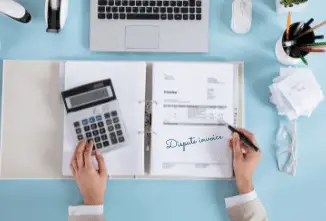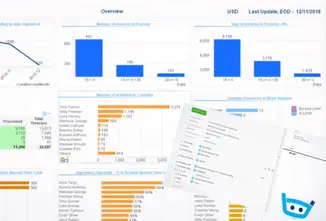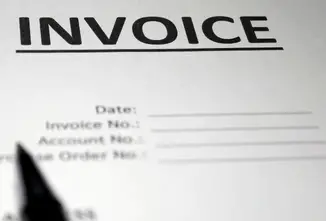Dealing with money issues is always a nightmare, and more so for businesses, because this means that your customers are involved, and things are about to get nasty.
Disputed invoices are one of the most common money issues that businesses have to deal with, and regardless of how airtight your billing process is, now and then, customers will dispute an invoice, and you will have to deal with that.
In this review, we give you the complete guide on dealing with disputed invoices, and in the end, we’ll give you some tips on how you can avoid the occurrence of invoice disputes in your business.
Let’s get started:
Definition of a disputed invoice
A disputed invoice refers to a situation where a customer fails to pay the amount on an issued invoice citing various issues. They will mostly give a reason for not paying, which is sometimes valid, and other times, it may not be.
Therefore, when this happens, you must come up with a way of dealing with the client in an amicable way that will help you get paid while retaining the customer.
Easier said than done, right? Well, we have a few ideas that can guide you through this.
The disputed invoice law UK
Currently, there are no strict legal laws to follow when it comes to disputed invoices. You could, however, make some objections to the supplier as quickly as possible and initiate court proceedings to be paid.
What you need to know, however, is: that the debtor may have a justified reason not to pay in case the products or services delivered are not as expected in the contract.
What you should be looking at in this case are contract laws. These remotely deal with invoice disputes, although this shouldn’t be where you look first to know your rights as pertains to disputed invoices.
When a client first disputes an invoice, you need to check your agreement with the client, that is, if you had one. The contract is likely to have some information pertaining to the invoice, such as:
- Payment dates
- Payment methods
- Late payment charges
- Consequences of non-payment
- Invoice dispute methods
This is what will guide you on the next steps. Remember that a client who doesn’t pay an invoice bound by a contract is technically in breach.
Now, if the client does indeed have a legitimate reason NOT pay the invoice, you will be required to take the next steps and initiate the dispute resolution methods.
What does it mean to receive a “dispute”?
Receiving a dispute means that one of your customers contests the invoice you sent them, and they are unwilling to pay. This means trouble because you will have to engage in dispute resolution procedures to try and get your money from the client. In some cases, you may have to go to court if all options fail.
What are the most common invoice disputes?
The most common invoice disputes include the following:
Types of invoice disputes
Similar to the common reason for disputes, types of disputes may require different treatment due to their nature. A dispute over invoice errors (bad writing, price error, etc.) can be resolved by the sales department. Technical disputes will be addressed by the technician or the sales manager.
Here are common types of invoice disputes:
- Quality dispute
- Price dispute
- Credit not processed
- Administrative dispute
- Duplicate invoice dispute
- Event date dispute
- Missing goods dispute
- Partial Dispute Amount
- Partial Dispute Percentage
How are disputed invoices dealt with?
There are many different ways of dealing with disputed invoices and remaining calm during the whole process is advisable.
Here are a few ways of going through the process:
How long do you have to dispute an invoice? (What’s the time limit?)
If no legal agreements (terms) state a time limit for invoice disputes, contract law determines the time limit through the applicable statute of limitations in your jurisdiction.
However, it is generally accepted that you can dispute an invoice within thirty days from the date of the invoice. [1] Or, where an invoice is regarded as not valid, you should notify the supplier immediately within seven calendar days of receipt.
You must make the dispute in writing. Common invoice dispute procedures include:
- Notification in writing
- An in-depth description of the dispute’s cause
- The undisputed amount must be paid
How do I dispute an invoice UK? (What’s the process?)
If you are the customer in this case, and you feel that something is wrong with the invoice you have received, you can query it and dispute it with your supplier.
The best way to do this is through emailing the supplier and letting them know that you have some issues with the invoice and are unwilling to pay it unless they correct the errors first. Of course, it’s never an easy process, but you can both agree on how to handle the matter with correct mediation and conversations.
How do you respond to a disputed invoice?
How you respond to a dispute from your customer will determine whether the process will be amicable or not. What you should do, however, is to try as much as possible to agree. Here’s a guide on how you can go about it:
Sample of a dispute letter
Don’t worry if you would like to dispute an invoice and have no way of going about it. We have prepared for you a sample letter that you can use.
This could be the starting point for your dispute. The particular letter below is for a billing error on the invoice.
- The date
- The name of your business
- The address of your business
- Your post/ zip code, state, and city
- The creditor name
- Their address
- Billing inquiries
- Their address
Here’s how you start:
Dear [insert neame],
We are writing regarding an error in billing on the invoice you sent on [due date]. The invoice is attached, and the dispute items are highlighted.
The amount is not accurate because [give reason]. This amount should be amended as follows [explain in detail].
I am hoping that you can correct this error to facilitate the payment of the invoice.
Please find copies of the contract enclosed, such as the sales slips, delivery note, and other supporting documents.
Please take time to investigate the matter to correct the invoice as soon as possible.
Sincerely
[your name]
What is invoice dispute management?
Invoice dispute management in receivable refers to the resolution of invoice and billing disputes that may arise. Invoice disputes can arise when a client decides that they are not responsible for paying an invoice.
Invoice disputes can cause business cash flow problems if they are not resolved promptly and actively managed. Many invoice disputes end up being bad debt for businesses. This is often due to the fact that they were not dealt with quickly.
Do I have to pay a disputed invoice?
No, you don’t need to pay the disputed invoice until the dispute regarding the invoice is resolved. All you need to do is request an invoice amendment, which is your legal right.
For example, if there is an issue in the accuracy of the amount, or maybe you’re not satisfied with the service, request the service provider to fix the issue before you pay.
Can you dispute a paid invoice?
Yes. The process is the same, although in this case, the burden is on the customer, and you may have to convince them that the work done was as agreed and the goods delivered were as requested. If you wish to keep doing business with the said client, listening, and trying to resolve the issue is paramount.
How to make a court claim for disputed invoices?
If you do decide to escalate the matter to court, here is the procedure:
- Start by downloading and printing the N1 claim form [2]
- Fill out the claim form and choose the right court, depending on where you live.
- Next, pay the court fee and proceeding fee depending upon the claim amount. [3]
- After that, the court will send a copy of your claim form to the defendant. The defendant must send a reply within 14 days. [4]
- Depending upon the reply of the defendant court will decide the best solution.
- You can also make a money claim online if you know exactly how much you want to claim. [5]
- For Money Claim Online (MCOL), you can pay the fee through your debit or credit card, and a receipt will be sent to your email along with a copy of your claim form. [6]
How to avoid invoice disputes in the future
A delayed or disputed payment will cause cash flow problems for your business. These are problems that can potentially threaten your business. Here are a few ways to avoid these issues in the future:
Always verify the invoice before sending it
Double-check the content on your invoice before sending it. Is the right person addressed on the invoice? Date, terms, and how to pay are clearly stated on the invoice?
Avoid changing the invoice amount after you send it
Changing the invoice amount from the original quote will raise a dispute. If the original quoted amount has changed, make sure it is explained clearly on your invoice to avoid a dispute being opened.
Communicate often before sending the invoice and afterwards. Provide a friendly reminder before the invoice is due and send a ‘thank you note after the payment has been received.
Set some rules for dispute resolution
In your terms and conditions, indicate that disputes must be raised within a certain time frame. This time limit will help to distinguish between legitimate disputes and false delay tactics. Download a free sample of disputed invoices clauses.
Have the right credit control procedures in place
Regular communication with the client during the credit period is vital, providing ample chance to ask questions about the invoice or credit terms.
Alternative invoice dispute resolutions
Here are a few alternative ways of handling disputes:
You might be interested in our beginners guide to invoicing.
Conclusion
That’s it for this guide. We hope that you have received the right information necessary to handle an invoice dispute from your client.
The most important thing to remember though this process is to remain calm and resolve the issue amicably.
When tempers flare, there is a good chance that you will not agree, and in the end, you will lose a customer and your money.




![How to write past due invoice emails that work [+ tips & templates] 4 How to write past due invoice emails that work](https://brodmin.com/wp-content/uploads/2022/04/How-to-write-past-due-invoice-emails-that-work.webp)
![How to invoice international clients [+ 10-point checklist] 5 Invoicing international clients](https://brodmin.com/wp-content/uploads/2021/10/Invoicing-international-clients-0.webp)






